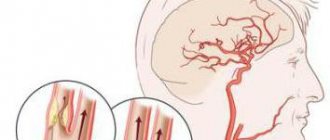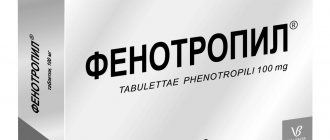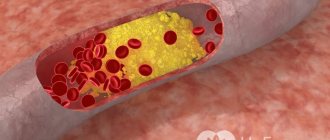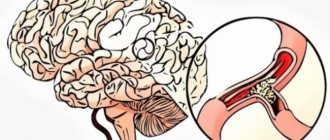Vegetovascular dystonia is a pathological condition characterized by a wide range of symptoms. The clinical picture includes attacks of rapid heartbeat and breathing, excessive sweating, dizziness and tinnitus, as well as gastrointestinal upset. The problem is associated with a violation of the process of regulation of the functioning of internal organs, the nervous and endocrine systems. Treatment is aimed at eliminating the cause of dysfunction and is also supportive. An important condition for successfully combating the disease is adherence to the principles of a healthy lifestyle.
Problems of the disease
Problems of cerebral vascular dystonia are often manifested by a violation of the regulation of heart tone. There is excessive tension during the rest period, and during the period when hard work is needed, the heart tone decreases. The body reacts to such an imbalance and disturbance of tone with multiple dystonic disorders. Patients with vascular dystonia often, and sometimes continuously, have headaches, dizziness, etc.
With the development of cerebral vascular dystonia, impaired vascular tone in the head negatively affects the condition of the entire vascular system of the body. It should be borne in mind that the symptoms of vascular dystonia, which are not related to the brain area, differ significantly from the symptoms of cerebrovascular lesions, although the principles of the approach to the treatment of all such problematic disorders and their causes do not differ.
The main causes of the disease
It is extremely important for the attending physician to take a history of the patient’s life. This will make it possible to understand when the pathology began to form and what negative factors affected the human body. Understanding what triggered the autonomic disorder, it will be easier to select therapeutic “tools” to get rid of the disease.
Vascular dystonia of the brain can occur due to the influence of the following unfavorable factors:
- Stress, a period of prolonged psycho-emotional stress;
- Traumatic brain injuries (history);
- Focal infections;
- Physical overexertion;
- Hormonal imbalance of various etiologies;
- Pathologies that provoke the occurrence of vertebrobasilar insufficiency. A striking example is osteochondrosis of the cervical spine;
- Chronic intoxication due to the influence of a variety of harmful elements;
- Radiation;
- Pathologies of the upper respiratory tract of a chronic nature;
- Bad habits (experienced smokers, long-term alcohol abuse);
- Incorrect rest and work schedule;
- Unbalanced diet, deficiency of nutrients;
- Abrupt climate change;
- Endocrine disruptions of any etiology;
- Hereditary predisposition;
- Rapid development of atherosclerosis (in particular, pathological processes occurring exclusively with the vessels of the brain);
- The presence of benign or malignant neoplasms in the brain.
There are many prerequisites for the formation of pathology. It is not always possible to establish exactly what exactly became the trigger in the development of dystonia.
The disease is more common in women. Experts believe that congenital emotional lability and increased psychological sensitivity are the main prerequisites for the formation of the disease.
Symptoms of cerebral vascular dystonia
Signs of vascular dystonia are usually divided into several complex groups of symptoms; pathological manifestations can:
- feel pain in the heart area - complex cardiological symptoms;
- feel very frequent heartbeats up to 150 per minute - tachycardic symptoms;
- be observed with a decrease in heart rate below 60 beats/min. – bradycardic symptoms;
- accompanied by a feeling of lack of air when breathing - complex respiratory symptoms;
- provoke an increase (hypertension) and a decrease in blood pressure;
- create temperature changes on the body surface - a thermoregulatory package of symptoms;
- negatively affect the performance of the digestive system – complex dyspeptic symptoms;
- increase the patient's nervousness, changing the mood and creating feelings of anxiety - a neurotic set of symptoms.
All of the listed complex groups of symptoms of vascular dystonia can appear in combination with each other, which complicates the treatment process.
When diagnosed by the attending physician, any type of vascular dystonia is indicated as a concomitant disease to some other disease. Pathology is not diagnosed as something independent.
With vascular dystonia, doctors usually assess the patient’s condition as not posing a significant threat to their life. It sometimes does not have a noticeable effect even on a decrease in labor productivity and ability to work. But vascular dystonia can worsen the quality of life very significantly.
In the direction of cerebral vascular dystonia, treatment can be quite effective. There are many cases of complete recovery. It is important to promptly diagnose vascular dystonia and remove the causes that contribute to the development of the disease.
There are also negative statistics, according to which almost 80 percent of patients with cerebral vascular dystonia aged 20-40 years acquire significant, difficult-to-treat functional disorders as a result of the disease. Female cerebral vascular dystonia is diagnosed several times more often than males.
Medicines for the treatment of cerebral vascular dystonia are needed only for a third of patients; the treatment process is carried out under the supervision of a therapist. If, as a result of the development of the disease, problems arise in certain systems of the patient’s body, a specialized doctor, cardiologist, endocrinologist, etc. is involved. It is he who prescribes medications for one or another problematic disorder accompanying vascular dystonia.
How to treat vegetative-vascular dystonia of the brain
Dystonia is a specific symptom complex designated in the international classification of diseases as neurocirculatory asthenia or vegetative dystonia syndrome. The vessels of the brain and the nervous system are the first to respond to various stimuli. The arteries and capillaries narrow, the brain does not receive enough nutrients and oxygen. Against the background of these unfavorable situations, the first symptoms of cerebral vascular dystonia arise. Almost all people (from teenagers to the elderly) can be affected by the disease.
Dystonia is a specific symptom complex designated in the international classification of diseases as neurocirculatory asthenia or vegetative dystonia syndrome. The vessels of the brain and the nervous system are the first to respond to various stimuli. The arteries and capillaries narrow, the brain does not receive enough nutrients and oxygen. Against the background of these unfavorable situations, the first symptoms of cerebral vascular dystonia arise. Almost all people (from teenagers to the elderly) can be affected by the disease.
Diagnostics
In the early stages, vegetative-vascular dystonia does not interfere with normal life, level of performance, and causes minor inconvenience. But without high-quality diagnostics and comprehensive treatment, it intensifies, making a person incapable of a normal life.
When a patient consults a doctor with a complex of unrelated symptoms, a comprehensive diagnosis is carried out.
The main condition for diagnosing vegetative vascular disease of the brain is the preliminary exclusion of all other diseases. Simply put, it is written down in the chart when they cannot determine exactly what exactly caused the poor health.
A comprehensive examination is required by doctors of various profiles: therapist, neurologist, psychiatrist, cardiologist, gastroenterologist and others.
Diagnostics takes place in stages:
- At the first visit, the doctor collects an anamnesis, finding out the patient’s living conditions, habits, the likelihood of a predisposition to VSD, and the health characteristics of blood relatives. A general blood test and ECG are performed.
- Additional studies are prescribed: transcranial Doppler sonography, ultrasound examination of the vessels of the neck and brain, biochemical blood test, MRI of the brain, x-ray of all parts of the spine.
- Instrumental technique – diagnostics using transcranial magnetic stimulation.
- Additional studies of the most affected body systems by specialists of a narrower profile.
The purpose of the diagnostic complex is to exclude the presence of organic pathology in a person. When the results of ECG, Doppler, MRI and other examinations remain within normal limits, there is no threat to life. And you can focus on normalizing vegetative-vascular dystonia of cerebral vessels.
In complex, advanced cases, additional medications of various types are prescribed. However, there are many patients who were helped to get rid of VSD of the brain simply by switching to a healthy lifestyle and adequate, acceptable physical activity.
Sources of the syndrome and provoking factors
The functioning of the body, each internal organ, occurs under the control of the autonomic nervous system, which is part of the structure of the central nervous system. People don’t think about the fact that during physical activity they need to breathe correctly and often to ensure normal oxygen supply to the muscles. He also does not think about what volume and composition of enzymes the liver must produce for the normal functioning of the gastrointestinal tract. These and many other processes are regulated by the autonomic nervous system.
This structural department of the central nervous system is divided into sympathetic and parasympathetic. The central section of the ANS is located in the spinal cord and brain, its nerve plexuses extend to all internal organs.
The sympathetic nervous system is involved in processes that involve energy expenditure, and the parasympathetic division is responsible for energy storage. For example, severe emotional stress activates the sympathetic department, causing surges in blood pressure, increased heart rate and other symptoms.
The action of the parasympathetic nervous system is aimed at reducing heart rate, normalizing intestinal motor function and the gastrointestinal tract as a whole. The nerve plexuses of the parasympathetic ANS extend to the respiratory tract, lungs, and participate in the innervation of the excretory and genital organs.
The sympathetic and parasympathetic departments are characterized by coordinated work and are in relative balance. When the tone of these sections is imbalanced, clinical manifestations characteristic of vegetative-vascular dystonia occur. Any structural changes in VSD are not diagnosed, however, if the balance of the VNS sections is disturbed, the functioning of all systems in the body is disrupted.
As a rule, the underlying factors for the development of VSD in an adult originate in early childhood. An increased risk of dysfunction in the functioning of the autonomic nervous system occurs at the hereditary level if the infant has experienced any changes in the cerebral (brain) structures of the central nervous system. This is due to a difficult pregnancy and complications during childbirth.
Symptoms of vascular dystonia of the brain throughout life arise under the influence of various factors, which include:
- developing infectious processes in the body;
- chronic diseases;
- hormonal changes (in adolescents during puberty, during pregnancy, after menopause, etc.);
- stress, frequent emotional overstrain.
In a woman’s body, disruptions at the hormonal level occur constantly, during certain periods, for example, during the menstrual cycle. Therefore, most cases of pathology are diagnosed specifically in the fairer sex: VSD in women is detected 2 times more often than in men.
The sympathetic and parasympathetic departments are characterized by coordinated work and are in relative balance. When the tone of these sections is imbalanced, clinical manifestations characteristic of vegetative-vascular dystonia occur. Any structural changes in VSD are not diagnosed, however, if the balance of the VNS sections is disturbed, the functioning of all systems in the body is disrupted.
List of complaints of patients with vascular dystonia, including the brain
Patients diagnosed with vascular dystonia complain that they:
- Fatigue is felt and general weakness is observed;
- Problematic tolerance to weather changes;
- Feelings of pain in the chest from the heart;
- Exhaustion of the body, both physically and mentally;
- Difficulty breathing and feeling close to suffocation;
- Strong heartbeat, accompanied by sudden freezing;
- Feeling of a heavy head and debilitating pain;
- There is a feeling of heat in the head and the face “burns”;
- For no apparent reason, the face turns very red, and then suddenly becomes pale;
- My head is spinning;
- Noisy in the ears;
- Problematic sensations in the digestive system, accompanied by nausea and problems walking “largely”;
- Frequent urge to urinate, which is very copious;
- The pressure “jumps”: sometimes high, sometimes low;
- Increased sweating is replaced by severe chills;
- The head and fingers are shaking;
- Excessive nervousness, panic, feelings of fear and anxiety;
- Urticaria and other types of allergies, etc.
The symptoms of VSD that appear from this list either appear, then go away, or are replaced by others.
Signs of venous discirculation
The main signs of venous discirculation include:
- frequent dull, bursting headaches, intensifying after physical activity, when bending or turning the head, with a lack of sleep, with mental stress;
- frequent dizziness;
- fainting conditions;
- constant tinnitus ;
- fatigue, weakness, decreased performance;
- frequent numbness of the limbs;
- feeling of a “heavy” head;
- swelling of the face;
- decreased vision;
- limb tremors.
At the same time, at the initial stages, venous discirculation is asymptomatic. Sometimes there may be periodic dizziness, headaches, weakness and fatigue.
Symptoms of venous dyshemia at the first stage
At the first stage of the disease, symptoms of venous discirculation are most often completely absent. Violations of venous outflow can be detected accidentally, during examination for concomitant diseases.
Less commonly, venous dysgemia can manifest itself as periodic unexpressed headaches, dizziness, weakness, drowsiness, lethargy, decreased performance, and periodic fainting.
For reference. The most common symptom of an incipient problem is constant sleepiness, regardless of the amount of rest.
Symptoms of venous discirculation at the second stage
In the second stage, the symptoms of the disease become more “noticeable” and intense.
The main signs of the second stage of venous discirculation are:
- intense headaches (pressing, bursting pains that last for several hours);
- cyanosis of the nasolabial triangle (most often appears after nervous strain or physical activity);
- frequent numbness of the fingers, crawling sensation;
- impaired sensitivity of the limbs;
- memory loss;
- frequent attacks of dizziness, fainting;
- impaired coordination of movements;
- weakness, severe drowsiness;
- constant noise and ringing in the ears.
Symptoms of venous discirculation in the second stage are variable. There may be a temporary disappearance or weakening of symptoms, with their subsequent intensification after physical activity, lack of sleep, emotional stress, or increased blood pressure.
Symptoms of the third stage of venous discirculation
At the third stage, the symptoms are pronounced and lead to impaired performance and decreased ability to self-care.
An increase in neurological symptoms may indicate an impending stroke.
At the third stage of the disease in patients:
- the behavioral component is disrupted (apathy, isolation, depressive behavior, irritability are noted);
- cognitive impairments appear (memory and speed of thinking decrease, the patient performs psychological tests extremely slowly, and in the later stages generally ceases to understand the task assigned to him);
- The sensitivity of the limbs sharply decreases, the development of paresis and paralysis of the limbs is possible (develops with irreversible damage to the cerebral cortex);
- problems with speech appear (due to severe damage to the cerebral cortex, speech often becomes inarticulate);
- Coordination of movements and orientation in space are completely disrupted (patients cannot move independently, fall, drop objects, do not remember how to control their own body).
For reference. Severe disturbances in motor coordination are usually associated with deep destruction of the extrapyramidal system (in particular, destruction of the cerebellum is observed).
Less commonly, patients experience a sharp decrease in vision, even to the point of developing blindness.
Causes of vascular dystonia
A wide range of factors can be responsible for creating conditions for the manifestation of vascular dystonia.
The functionality of the brain and the entire vegetatively branched system of nerves can be negatively affected by:
- predisposition due to hereditary factors;
- cerebral pathology and other pathological diseases of the central nervous system, both congenital and acquired;
- hormonal disruptions during periods of body restructuring during puberty and other cases;
- injuries, including those received at birth;
- infectious, endocrinological and other chronic diseases;
- alcohol addiction and other habits harmful to health in general and the brain in particular;
- physical inactivity;
- state of depression;
- problems of acclimatization in a new place;
- lack of vitamins caused by an unbalanced diet;
- poisoning of the body, including some low-quality medications or medications that do not correspond to the disease, etc.
From this list of possible causes of vascular dystonia, including the brain, we should especially highlight the stress that 7-15 year old children and adolescents receive at home and at school. It is caused by conflicts of various kinds in school and family, situations with parents’ divorce, alcoholism of one of them, etc.
Reasons for the development of dystonia
There are several main factors leading to the emergence of a pathological symptom complex:
- Intrauterine anomalies of fetal development. Such problems can cause significant disturbances in the functioning of the nervous system, for example, leading to the occurrence of vegetative-vascular dystonia of the brain.
- Injuries during childbirth, as well as infectious diseases in infancy. Bacterial and viral lesions can disrupt the normal processes of formation of vascular structures and the nervous system. Damage to the fetal head during passage through the woman’s genital tract, as well as hypoxic phenomena, are among the causes of vascular dystonia.
- Hormonal changes during puberty. The growth and development of internal organs can outpace the formation of neurohumoral mechanisms regulating homeostasis, which leads to the appearance of symptoms of vegetative-vascular dystonia.
- Chronic diseases affecting the arteries and veins, digestive and respiratory tracts have a negative impact. Many pathologies alter the processes of nervous regulation and also provoke venous congestion in the internal organs, which leads to the formation of characteristic symptoms of the lesion.
- A common cause of signs of vegetative-vascular dystonia in women is pregnancy. This condition is accompanied by rapid and pronounced changes in hormonal levels, and also leads to increased stress on the body.
- A factor that can provoke the problem is stress. Chronic psycho-emotional stress is especially dangerous.
Symptoms that require you to see a doctor
At the onset of the disease, symptoms of vascular dystonia appear in a mild form. There is no decrease in performance observed. If you don't see a doctor, you can make the situation worse. The number of symptoms will increase, which will worsen the patient’s quality of life. Failure to take treatment measures will provoke the development of the disease. In case of cerebral vascular dystonia, timely and early consultation with a doctor is the key to eliminating the problem.
You should seek medical attention if you observe signs of health problems in your body in the form of:
- the appearance of swelling of the eyelids and face in the morning;
- dizziness;
- debilitating headaches;
- shortness of breath;
- constant drowsiness;
- causeless mood changes, etc.
Definition
Vascular tone is the tension that occurs in the vascular wall as a result of contraction of smooth muscles extending along the entire surface of the vessel. Smooth muscle cells are presented in the form of a spindle. Their length is 50-400 microns, thickness - 2-10 microns. The contraction of smooth muscles is involuntary and does not depend on the will of the person. The smooth muscles of the vascular wall are constantly in a state of contraction, which ensures the movement of blood within the circulatory system.
Vascular tone is a characteristic that reflects the ability of the muscle layer to maintain a certain diameter of the lumen of the vessel. The most important condition for adequate blood supply to the brain is the correspondence of the volume of arterial and venous blood. If the arterial inflow is equal to the venous outflow, this indicates the absence of pathologies. The occurrence of venous stagnation against the background of dysregulation of the tone of the arterial wall correlates with the development of diseases of the circulatory system and with impaired blood supply to the brain.
Common pathologies include arterial hypertension, migraine, and vegetative-vascular dystonia. The norm for indicators of arterial wall tone and blood supply to brain tissue varies depending on the individual characteristics of the body and condition. For example, in a state of physiological rest, motor activity or orthostasis (standing position), these indicators differ from one person to another.
Vascular hypertonicity is a state of increased tension in the muscles of the vascular wall, which leads to the development of spasm and a significant decrease in the lumen. For example, a reduction in the diameter of cerebral arteries by 1 mm is accompanied by an increase in resistance to blood flow by 16 times, which correlates with impaired blood supply to brain tissue and the development of hypoxic-ischemic processes.
Hypotonicity is a condition when the tone of the vessels supplying blood to the brain is reduced. Hypotonia correlates with such pathological processes as impaired venous outflow, arterial hypotension, and asthenic syndrome. Signs of decreased tone of the vascular wall and arterial hypotension:
- Pain in the head area.
- Dizziness, short-term confusion, fainting.
- General weakness, lethargy in the morning, decreased performance, increased fatigue.
- Sleep disturbance (drowsiness during the day, insomnia at night).
- Paleness of the skin.
- Thermoregulation disorder (cold hands and feet).
- Emotional lability (mood swings), irritability.
If the tone of large-caliber cerebral arteries is significantly reduced, this is a condition that indicates the presence of dystonia and often requires drug correction, which will ensure sufficient blood flow to the brain tissue and prevent the development of ischemia.
Symptoms of sudden attacks
Sudden crises are characteristic of 45 percent of cases in which the course of cerebral vascular dystonia is influenced by some provoking factors: disruptions of the hormonal system, infections, etc.
Symptoms of crises of vascular dystonia allow us to divide sudden attacks into three groups: sympathoadrenal, vagoinsular and mixed crises.
During sympathoadrenal attacks, a release of adrenaline produced by the adrenal glands into the blood occurs, provoking an exacerbation of the situation. The attack is characterized by increasing pain symptoms in the head, rapid heartbeat, chest pain, increased blood pressure, panic in the patient, tremors in the limbs, etc.
During a vagoinsular attack, pancreatic insulin is released into the blood. A patient with cerebral vascular dystonia has pallor of the skin, a weak pulse with long intervals between beats, he complains of a lack of air for breathing and darkening in the eyes, he has low blood pressure, and the glucose level is below normal at 3.5 mmol/l. There is sweating, a state close to fainting, increased bowel function, etc.
In a mixed crisis, symptoms of two previously described attacks are present. Vegetative vascular crises are characterized by a sudden onset and rapid cessation of the manifestation of these symptoms. After a crisis, a person feels exhausted both physically and mentally. After the first crisis that occurs, you should immediately consult your doctor.
Diagnostics
Complaints from a patient with cerebral vascular dystonia do not make it possible to make a correct, accurate and unambiguous diagnosis. The reason is the variety of forms of manifestation of vascular dystonia, including in the form of venous discirculation of the brain.
The doctor prescribes various diagnostic procedures, including the need for an MRI if autonomic dystonia syndrome is suspected.
To correctly diagnose the problem, it is necessary to conduct studies and tests in addition to MRI of the brain:
- urine and blood;
- in the format of various types of functional diagnostics from electrocardiography to transcranial Dopplerography;
- X-rays of the vertebral sections, etc.
The patient should be examined by an endocrinologist, urologist and other specialized specialists. The entire range of measures is aimed at accurately diagnosing cerebral vascular dystonia, which is complicated by the presence of similar symptoms to other diseases.
Diagnosis of cerebral type VSD
Diagnosis of cerebral dystonia should be carried out by several doctors: a therapist, a cardiologist, a neurologist, an angiosurgeon. At the first stage, the patient is interviewed and examined for complaints and external manifestations of the disease. The likelihood of genetic predisposition is assessed. All other diseases are excluded. Next, the following diagnostic measures are carried out:
- laboratory blood and urine tests;
- electrocardiogram;
- dopplerography;
- scanning of veins and arteries;
- X-ray of the spine;
- MRI;
- CT scan.
If necessary, consultations with a gastroenterologist and endocrinologist may be necessary. If hormonal imbalances are suspected, a hormonal level study is carried out. Portable devices are used for daily blood pressure monitoring. The most accurate method is rheoencephalography. With its help, the entire vascular system of the brain is examined. Based on the results of rheoencephalography, data on the tone, elasticity, and reactivity of blood vessels is obtained. Using this method, the state of the arterial and venous systems in the brain is assessed.
Treatment
How to treat vascular dystonia? A special feature of correcting this problem is, in addition to medication and other measures, the need to change lifestyle.
It is important to establish the correct mode of work, alternating with regular rest. Patients with cerebral vascular dystonia should go to bed early and get up early. It is advisable to stick to the same sleep schedule and duration. You should review your food preferences, remove coffee, tea, alcohol in any form, as well as spicy and fried foods from your diet. Baths with pine needles can be a positive measure to reduce fatigue. Honey with milk at night promotes quality sleep. Physical stress and strong emotional stress should be avoided. A contrast shower is advisable.
Drug therapy for cerebral vascular dystonia suggests using:
- vitamins;
- antioxidants;
- drugs that help improve blood circulation and normalize blood pressure; hypnotic;
- sedatives;
- adrenergic blockers (anaprilin);
- nicotinic acid;
- cinnarizine;
- tranquilizers, etc.
For cerebral vascular dystonia, therapeutic exercises, auto-training and massage are necessary. Physiotherapeutic procedures of acupuncture, electrophoresis, etc. are desirable.
Treatment of the disease
If the question arises of how to treat vegetative-vascular dystonia that has affected the brain, doctors advise paying attention to normalizing the work regime and creating conditions for improving the patient’s condition. For this purpose, a balanced, healthy diet is organized, thanks to which the patient receives the necessary vitamins, microelements and nutrients. Dosed sports activities and full, restful sleep are recommended, the duration of which is at least 7 hours a day.
Medicines
The conservative therapy program includes drugs that normalize the tone of the vascular walls of large and small arteries of the brain and regulate cellular metabolism. If abnormalities in the functioning of the circulatory system progress, the patient may experience symptoms of vascular dystonia occurring in the brain, such as panic and fear.
In these cases, tranquilizers, antidepressants, antipsychotics, and sedatives are additionally prescribed. For VSD, tablets, drops and other medications are prescribed to strengthen and increase the elasticity of the blood vessels in the brain. Preparations for strengthening the vascular wall and treating disorders in the cerebral circulatory system - “Dehydroquercetin”, “Eufillin”, “Ascorutin”, “Escin”, “Piricarbate”, “Piracetam”, “Aminalon”.
Physiotherapy
Relaxing massage, herbal medicine, aromatherapy, and psychotherapy will help cope with the signs of vascular dystonia in the brain. Water procedures, hardening of the body, and therapeutic exercises are shown. Charcot's shower is a hydromassage procedure during which parts of the body are exposed to a high-pressure water stream supplied in variable temperature conditions. The hot stream alternates with a cool stream. Other physiotherapy procedures are prescribed:
- Electrosleep (exposure to pulsed currents of low voltage and low frequency).
- Darsonvalization (electromagnetic stimulation of brain tissue).
- UV treatment of the collar zone.
- Electrophoresis (a combination of direct current and medications of different effects).
- Magnetic therapy of low-frequency fields.
- Laser therapy.
Physiotherapeutic procedures improve blood microcirculation and blood circulation in general, stimulate metabolic processes in cells and tissues, normalize vascular trophism, and provide analgesic and anti-inflammatory effects. Hardware techniques increase the peripheral tone of vascular walls and capillaries. As a result, tissues are better saturated with oxygen and nutrients.
Lifestyle
For patients who are interested in how to strengthen the blood vessels of the brain during VSD, doctors recommend giving up bad habits, walking more in the fresh air, eating healthy foods, and playing sports. Limiting stressful situations and maintaining an atmosphere of emotional balance is of great importance.











